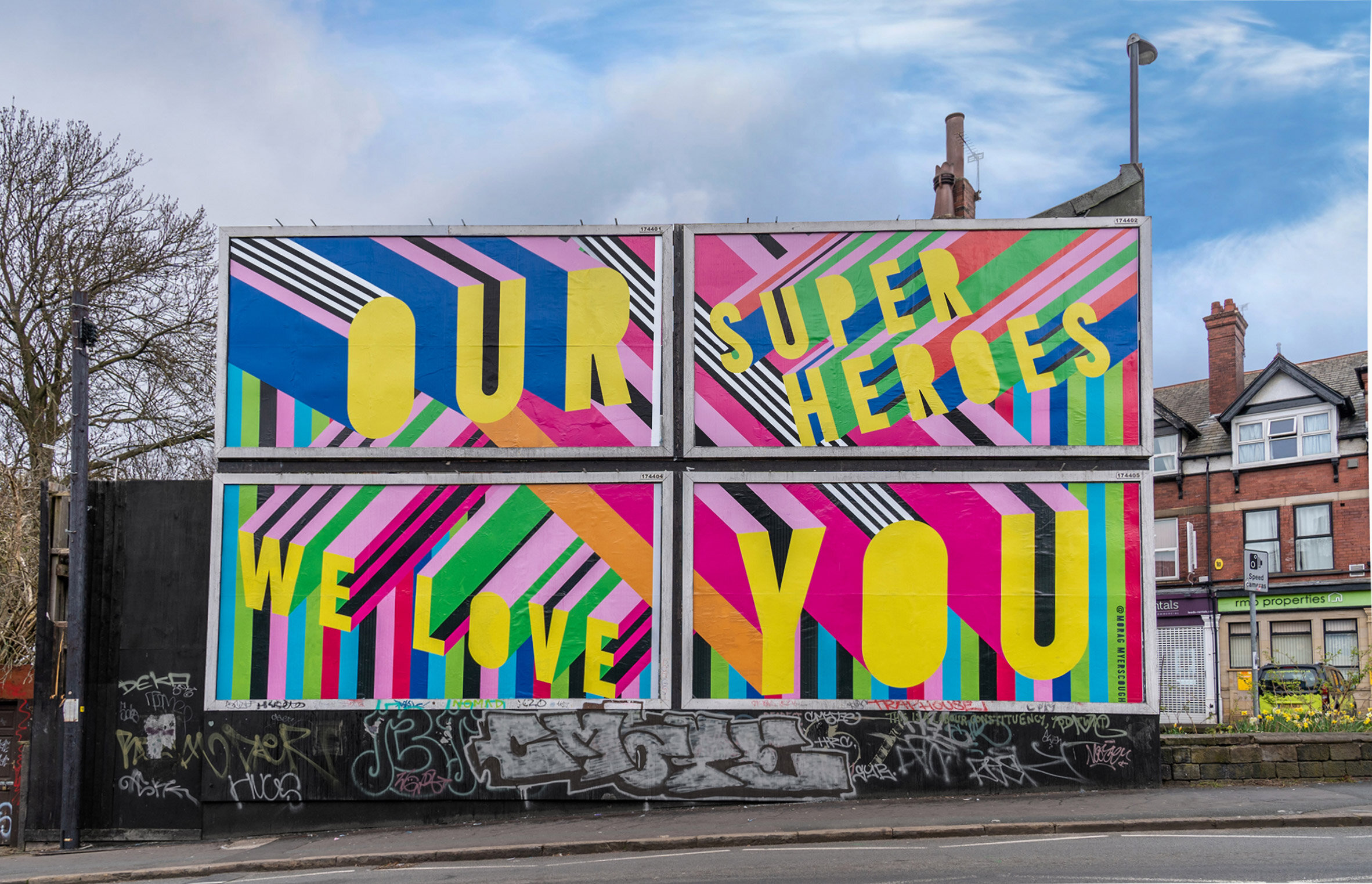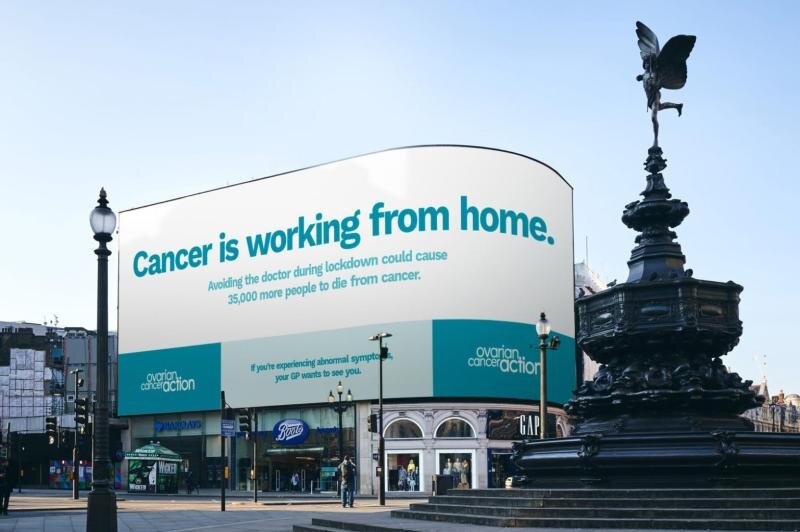CC3: time to shoot the messenger or laugh
From light humour to heavy criticism, the climate for Covid communications is changing.
Advertising around Covid-19 came in for quite a rap in the New York Times. In The Pandemic Ad Salutes You the critic Amanda Hess first sneers at advertisers for making doctors and nurses corporate spokespersons and then sneers at them making heroes out of the everyday folk at home. These couch potatoes are ersatz heroes in their dumb consumption of doughnuts and burgers. The comments section shows that, like the writer, there are many readers of the NYT who seem to call for the end of capitalism, with the advertisers first to go up against the wall.
While the newspaper itself suckles at the teat of ad revenues and media, doing bold things with its own ads from Droga5, it also managed a striking graphic response with a front page (above) dedicated to names of the deceased, the beginning of a list of a 1000 names of those killed by coronavirus, at the time approximately one per cent of those who had died of the pandemic in the USA.
It’s no surprise though that there is an article criticising the ads. There are some stinkers out there. So what, the great majority of most everything is not that good. So where can the creative go as the story develops?
With any narrative, as it gets more complicated it can get confusing. The emotional connection can snap. As the story develops with depth it risks the audience failing to follow or even switching off. At the start of the ‘Covid Campaign’ a simple slogan in a lovely colourful poster, such as the above, created by designer Morag Myerscough with agency In Good Company, can work wonders.
But as the story develops, more complicated messages emerged. Such as the one below from TBWA\London for Ovarian Cancer Action that responds to mounting concern that lockdown led to people ignoring other health issues. It encourages women to contact their doctor if they have any symptoms that might indicate cancer. Not the usual Piccadilly Circus cheer.
For many, the pick of the bunch of this phase is likely to be the film Never Too Far Down by W+K for Nike. It has a big feel-good heroic message while effectively saying you can buy sports stuff, the game is back on. It retains the emotional montage approach but the story has moved on.
This draws on the emotional reservoir we have locked in our memories around many a great sporting comeback. LeBron James narrates over multiple shots of Tiger Woods and Serena Williams, and the likes of Rafa Nadal, Cristiano Ronaldo and others also get in on the act. Nike-sponsored athletes mostly, if not all (spot the Adidas logo), and weighted to American taste and sentiment. The idea of a ‘comeback win’ metaphor may grate for many (especially relatives of the deceased) but this film puts across an uplifting motivational message and taps into a well of shared experience. Well, if you are a sports fan.
On the subject of Adidas, it showed another tack for getting the brand across with the stories it generated for moving into mask manufacture, with a charitable donation from every sale. Simple relevant stuff that leads to buyers walking around with Adidas branding on their face as they protect themselves while feeling virtuous for the hi-tech recycled material of their washable purchase.
Many companies have put resources and branding behind making useful masks or other Covid-related products. Of course, at this point you might hear the hectoring of Ms Hess again, thinking consumers are just being duped.
But it’s all part of the new normal and the key question is whether the brand manages to do something that hits the spot. Maudlin sentimentality is not the only emotional register needed and sometimes cheeky humour is most welcome. From a brand such as Trojan condoms it seems entirely in order. 72andSunny, New York, deliver for the edgy brand with the Rising Time book of home baking recipes that encourages readers to combine home activities of bread-making and lovemaking. There are 69 pages (ha ha) of sensual recipes. Many more jokes are delivered, along with a donation of 50,000 meals by Trojan to Feeding America to share the love from the project.
A similar balance of cheekiness and Covid relevance is apparent in a Burger King social distancing twist from Wunderman Thompson Italia.
‘Onion breath’ or whatever that is when in Rome (‘respiro di cipolla?’) may offend some but given how onions and garlic are key to many a fine dish in Italy, Burger King should attract rather than deter business with this offer.
As we pull out of lockdown there is time for lightness of touch and good old-fashioned advertising with wit to return and no pretence of doing good. Perhaps that is why Ryan Reynolds’ ‘New ManageMint’ spot for Mint Mobile has won wide praise. It’s not genius, and it scarcely even qualifies for this article given it almost avoids Covid and hard sells a cheap mobile service, but it is definitely fresh and minty.
In a similar silly spirit of Covid-inflected lockdown daftness is a series of three fun spots from Skoda, in collaboration with agency Optimist and the Dutch production company Halal. ‘Discover New Possibilities – Shot At Home’ pitches three directors into isolated innovation, making their spots entirely at home using toy Skoda models. Who needs to ever go to an exotic twisty road location again? It’s quite a shootout as the three do their best with limited resources. Here is how Steffan Haars handled it.
And a cooler drive with From Form.
And some animated stunt work from Johan Kramer.
Perhaps it is OK to have fun again.
But we had better end this piece with something that has solid Covid credibility. For this, it is high time to give a round of applause to one of the most used pieces of creative work in the whole pandemic… this one.
This CGI was perhaps our first sight of the enemy, the coronavirus. Or, to be more accurate, the virion, the singular little globule of horror. It is what the medical illustration team at Centers For Disease Control and Prevention created way back in January as a visualisation of something that is 125 nanometers in width (or 125 thousand-millionths of a metre in diameter) and is at best a grey hazy blob even under an electron microscope. They drew on various scientist input and 3D visualising tech to create this cool ball with blobby bits of colourful protein, now widely used by media all around the world and copied into other versions.
It just might be the image of the year. Let’s hope we don’t need to see it much longer, though.
Cresta has introduced a free-to-enter Covid-19 category as part this year’s new Healthcare section of the awards. Work in any related area and in any medium will be accepted for submission.






















